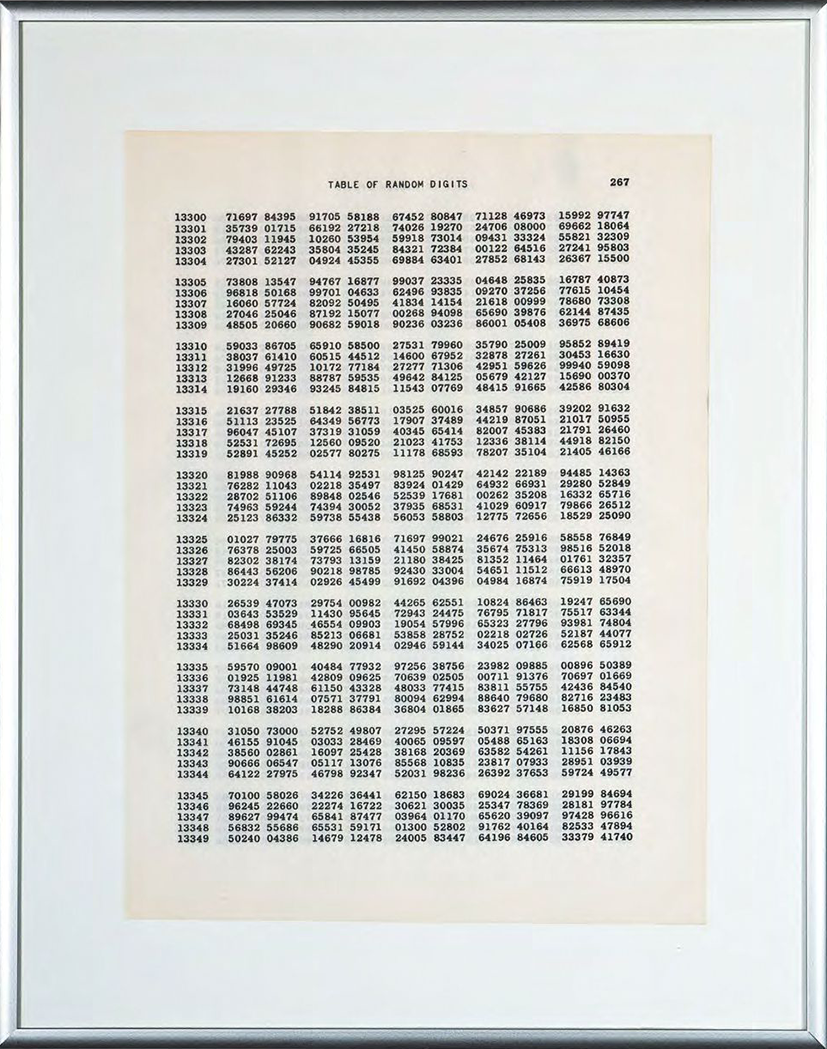

Just after World War Il, the RAND Corporation was quietly working on a massive book of numbers. A Million Random Digits (With 100,000 Normal Deviates) was published by The Free Press in 1955 afler almost fen years of meticulous production. The volume is comprised of page afler page of numbers mathematical fables filled with random digits. (A typical page (picked at random) from the 1966 printing is reproduced on the cover of this bulletin.) The random number bible has passed through three editions, multiple printings, and is currently available as both a sof formal paperback book and as a text data file downloadable directly from RAND. [...]
Producing a random digit is complex. To make the tables in A Million Random Digits, RAND engineers created an electronic rouletle wheel with 32 possible values by measuring the decay of a radioactive molecule gated by a constant frequency pulse. These regular electric signals (either on or off, 100,000 times a second for 10 seconds) were run through afive digit binary counter to produce a 5-bit number with 32 possible values. The binary number was converted fo decimal and only the final digit was retained fo create the 1,000,000 random digils. These values were fed into an IBM punch machine to produce 20,000 compuler punch cards with 50 digils each. (Punch cards were then the only practical way fo both store and input information into a digital computer.)
However, when analyzing this first attempt, RAND engineers detected a bias. Employing a standard statistical goodness-of-fit fest to measure the data's conformity to a bell shaped or “ norma l ” curve, the sampled numbers did no ! match closely enough to the normal distribution of values which would indicate purely random digits. Each number was added modulo 10 (divide by 10 and use only the remainder) to the corresponding digit on the previous card fo yield a new set of random values with an almost perfectly normal distribution.
Random digit tables were then printed on an IBM 856 Cardatype and reproduced as pages for the book. Proofreading was redundant given the nature of the information.
– “ A Million Random Digits, ” David Reinfurt, Bulletins of The Serving Library #3, 2012
RAND Corporation, Random page from a million random digits (with 100,000 normal deviates), 1955 (this page from the 1966 edition), 35 x 27.5 cm